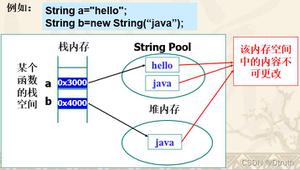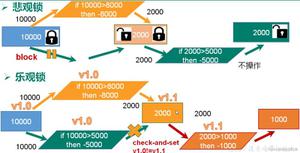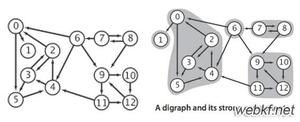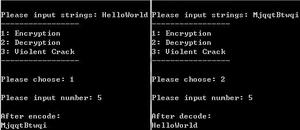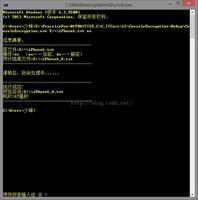Java实现的RSA加密解密算法示例
本文实例讲述了Java实现的RSA加密解密算法。分享给大家供大家参考,具体如下:
import java.awt.AlphaComposite;
import java.awt.Color;
import java.awt.Font;
import java.awt.Graphics2D;
import java.awt.Image;
import java.awt.RenderingHints;
import java.awt.image.BufferedImage;
import java.io.File;
import java.io.FileInputStream;
import java.io.FileOutputStream;
import java.io.ObjectInputStream;
import java.io.ObjectOutputStream;
import java.security.Key;
import java.security.KeyPair;
import java.security.KeyPairGenerator;
import java.security.SecureRandom;
import java.security.interfaces.RSAPrivateKey;
import java.security.interfaces.RSAPublicKey;
import javax.crypto.Cipher;
public class RSAUtils{
public static String makekeyfile(String pubkeyfile, String prikeyfile) {
String result = "生成公私钥文件失败";
try{
// KeyPairGenerator用于生成公私钥对,基于RSA算法生成对象
KeyPairGenerator gen = KeyPairGenerator.getInstance("RSA");
// 初始化密钥对生成器,密钥大小为1024位
gen.initialize(1024);
// //生成强随机数
// SecureRandom random = new SecureRandom();
// gen.initialize(1024,random);
// 生成一个密钥对,保存在pair中
KeyPair pair = gen.generateKeyPair();
// 得到私钥
RSAPrivateKey priKey = (RSAPrivateKey) pair.getPrivate();
// 得到公钥
RSAPublicKey pubKey = (RSAPublicKey) pair.getPublic();
// 生成私钥文件
ObjectOutputStream os = new ObjectOutputStream(new FileOutputStream(prikeyfile));
os.writeObject(priKey);
os.flush();
os.close();
//生成公钥文件
os = new ObjectOutputStream(new FileOutputStream(pubkeyfile));
os.writeObject(pubKey);
os.flush();
os.close();
result = "生成公钥文件【"+pubkeyfile+"】生成私钥文件【"+prikeyfile+"】";
}catch(Exception e){
e.printStackTrace();
}
return result;
}
public static void main(String[] args) {
try{
String pubfile = "F:/images/pub.key";
String prifile = "F:/images/pri.key";
String result = null;
//result = makekeyfile(pubfile, prifile);
result = markPuPra(pubfile, prifile);
System.out.println(result);
}catch(Exception e){
e.printStackTrace();
}
}
public static String markPuPra(String pubfile,String prifile){
String results = "加解密出错";
try{
ObjectInputStream os = new ObjectInputStream(new FileInputStream(pubfile));
RSAPublicKey pubkey = (RSAPublicKey) os.readObject();
os.close();
os = new ObjectInputStream(new FileInputStream(prifile));
RSAPrivateKey prikey = (RSAPrivateKey) os.readObject();
os.close();
String utf = "UTF-8";
String msg = "##中国%%的)人@+_";
// 使用公钥加密私钥解密
System.out.println("原文: " + msg);
byte[] puk = handleData(pubkey, msg.getBytes(utf), 1);
System.out.println("加密后文件数据: " + new String(puk, utf));
byte[] dpuk = handleData(prikey, puk, 0);
System.out.println("解密后文件数据: " + new String(dpuk, utf));
msg = "jd#我0们的¥人+=#新";
// 使用私钥加密公钥解密
System.out.println("原文: " + msg);
byte[] prk = handleData(prikey, msg.getBytes(utf), 1);
System.out.println("加密后文件数据: " + new String(prk, utf));
byte[] dprk = handleData(pubkey, prk, 0);
System.out.println("解密后文件数据: " + new String(dprk, utf));
results = "加解密完成";
}catch(Exception e){
e.printStackTrace();
}
return results;
}
/**
*
* @param k
* @param data
* @param encrypt 1 加密 0解密
* @return
* @throws Exception
*/
public static byte[] handleData(Key key, byte[] data, int type) throws Exception {
if (key != null) {
Cipher ci = Cipher.getInstance("RSA");
if (type == 1) {
ci.init(Cipher.ENCRYPT_MODE, key);
byte[] res = ci.doFinal(data);
return res;
}
if (type == 0) {
ci.init(Cipher.DECRYPT_MODE, key);
byte[] res = ci.doFinal(data);
return res;
}
}
return null;
}
}
PS:关于加密解密感兴趣的朋友还可以参考本站在线工具:
文字在线加密解密工具(包含AES、DES、RC4等):
http://tools.jb51.net/password/txt_encode
MD5在线加密工具:
http://tools.jb51.net/password/CreateMD5Password
在线散列/哈希算法加密工具:
http://tools.jb51.net/password/hash_encrypt
在线MD5/hash/SHA-1/SHA-2/SHA-256/SHA-512/SHA-3/RIPEMD-160加密工具:
http://tools.jb51.net/password/hash_md5_sha
在线sha1/sha224/sha256/sha384/sha512加密工具:
http://tools.jb51.net/password/sha_encode
更多关于java相关内容感兴趣的读者可查看本站专题:《Java数学运算技巧总结》、《Java数据结构与算法教程》、《Java字符与字符串操作技巧总结》、《Java操作DOM节点技巧总结》和《Java缓存操作技巧汇总》
希望本文所述对大家java程序设计有所帮助。
以上是 Java实现的RSA加密解密算法示例 的全部内容, 来源链接: utcz.com/z/319331.html


